Mandevilla Vine: Tips For Proper Mandevilla Care


Tonya Barnett
The mandevilla plant has become a common patio plant, and rightfully so. The brilliant mandevilla flowers add a tropical flair to any landscape.
With over 100 species, Mandevilla is a diverse genus. These tropical vines are prized for their beautiful trumpet-shaped blooms and ability to quickly cover arbors and trellises. Though mandevilla flowers will require a frost-free climate in order to perennialize, many gardeners have found success growing them as an annual or indoors in containers. Read on for the basics of mandevilla care.
Quick Facts about Mandevilla
- Botanical name - Mandevilla spp.
- Height - 3-10 feet (1-3 m)
- Spread - 3-20 feet (1-6 m)
- Sun exposure - Full Sun, Part Sun
- Soil requirements - Well-Draining
- Hardiness zones - USDA Zones 9-11
- When to plant - Spring
When & Where to Plant Mandevilla
Mandevilla is most often planted in spring, after all chances of frost have passed and the soil has warmed. As the plants will languish under cool conditions, growers living outside of their hardiness range should wait until nighttime temperatures no longer dip below 50 F (10 C). Gardeners in regions that are known for their mild temperatures may require the use of greenhouses or cold frames in order to successfully grow the plant outdoors.
Tips for Mandevilla Care
When you buy your mandevilla vine, chances are good that it’s a lush plant full of flowers. You may wish to transplant it to the ground or into a bigger or more decorative container. Here are the basic mandevilla care requirements you need to follow.
Soil
Like many plants, mandevilla will thrive under a range of soil conditions. That being said, it performs best in rich soil that doesn't hold water -- work in compost or other organic material before planting to create nutrient-rich, well-draining soil conditions. Mandevilla in pots are most often planted in a quality growing medium that has been mixed with peat moss or sand.
Fertilizer
As mandevilla is considered to be a heavy feeder, routine fertilization will be a key aspect of its care. This is most often achieved through the use of a well-balanced feed designed for ornamental plants. If you want spectacular flowers, consider a fertilizer that is higher in phosphorus. Apply fertilizer in spring, continuing every two weeks through mid-summer.
Water
Mandevilla plants require consistently moist soil. At the same time, you should make certain to avoid getting them excessively wet or waterlogged. Supplemental irrigation may be required in regions that are especially dry, but it's generally not required. Those growing the plant indoors may also find that occasional misting is needed to maintain humidity levels.
Gardening tips, videos, info and more delivered right to your inbox!
Sign up for the Gardening Know How newsletter today and receive a free copy of our e-book "How to Grow Delicious Tomatoes".
Light
Mandevilla vines need full sun in order to flower well. They can tolerate partial shade, however. Plants grown in containers or in regions that are especially warm may benefit from afternoon shade.
Mandevilla Plant Care
Routine mandevilla care will help growers in maintaining the general appearance of their plants.
Pruning
At the beginning of the growing season, you may want to pinch your vining mandevilla. This method of pruning your mandevilla will create a bushier and fuller plant. To pinch your mandevilla vine, simply use your fingers to pinch off 1/4 to 1/2 inch (0.6-1 cm) off the end of each stem.
Safety
Wearing gloves and other protective gear will be essential when handling mandevilla plants, as exposure to its sap may cause rash, blistering, and other types of skin irritation.
Trellising
Mandevillas are vines and they will need some kind of support in order to grow as best they can. Be sure to provide a trellis or some other support for your mandevilla vine's new growth to follow.
Propagating Mandevilla
Though it is possible to grow mandevilla from seed, most plants are purchased from home and garden centers. You can also propagate mandevilla plants by taking cuttings. Stem cuttings, approximately 4-6 inches (10-15 cm) in length, can be rooted in a quality potting mix. Throughout their period of establishment, growing medium should remain consistently moist. A humidity dome is often necessary in order to maintain humidity and encourage rooting. You can expect mandevilla cuttings to root in roughly 1-2 weeks.
Problems, Pests, & Diseases
Several insects may affect the overall appearance of mandevilla foliage. These pests include whiteflies, mealy bugs, and mites, which are especially common in houseplants. Foliar diseases, such as anthracnose, may further lead to the decline of plant health. Symptoms of infection include the formation of spotted lesions, as well as yellowing and premature drop of leaves.
Winter Care for Mandevilla
Mandevilla vines vary in growth habit. While some species remain evergreen throughout the entirety of winter, others will die back or lose their leaves.
Temperature
Mandevilla is a tropical vine, and exposure to cold temperatures will cause it to die back quickly. Therefore, those who have planted mandevilla in cooler climates may need to protect plants from sudden dips. Plants which have been allowed to slip into dormancy will also die back. At this time, you should prune back each stem.
Growing Mandevilla Year-Round
The mandevilla plant is often thought of as an annual but, in fact, it is very frost tender perennial. Once temperatures go below 50 degrees F (10 C), you can bring your mandevilla plant indoors for the winter.
When you bring your mandevilla flowers indoors, be sure to check the plant carefully for pests and treat these pests before bringing it into the house. You may want to cut back the plant by up to one-third.
Once indoors, place your mandevilla vine in a place where it will get bright, indirect light. Water the plant when the soil is dry to the touch.
In the spring, when the temperatures are consistently above 50 degrees F (10 C), remove any dead leaves and move your mandevilla plant back outside to enjoy for another summer.

Heather Rhoades founded Gardening Know How in 2007. She holds degrees from Cleveland State University and Northern Kentucky University. She is an avid gardener with a passion for community, and is a recipient of the Master Gardeners of Ohio Lifetime Achievement Award.
- Tonya BarnettWriter
-
 Get Ready For A Summer Of Hummers! Grow These Full Sun Hummingbird Plants and Flowers
Get Ready For A Summer Of Hummers! Grow These Full Sun Hummingbird Plants and FlowersIf you’re lucky enough to enjoy a sunny backyard, make sure you are maxing out on your pollinator opportunities and grow these full sun hummingbird plants and flowers
By Tonya Barnett
-
 12 Lush Alternatives To A Lawn For Sustainable Spaces
12 Lush Alternatives To A Lawn For Sustainable SpacesAlternatives to a lawn are beautiful and also beneficial to your local ecosystem and its pollinators. Explore our top picks for plants to replace grass.
By Tonya Barnett
-
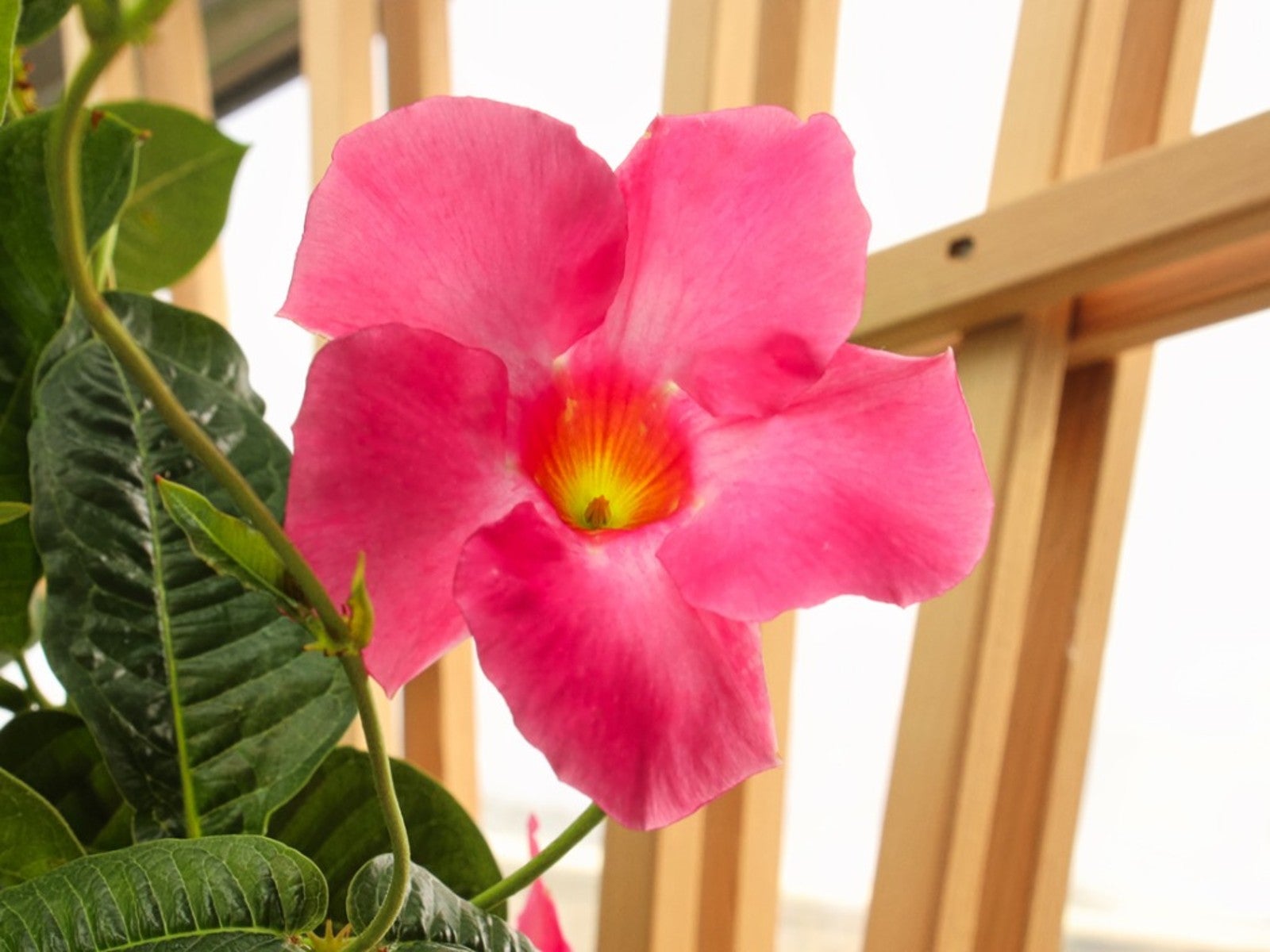 How Much Light Does A Mandevilla Need Indoors?
How Much Light Does A Mandevilla Need Indoors?You can overwinter a beautiful mandevilla indoors, but it has special lighting needs. Read on to learn more about it.
By Amy Grant
-
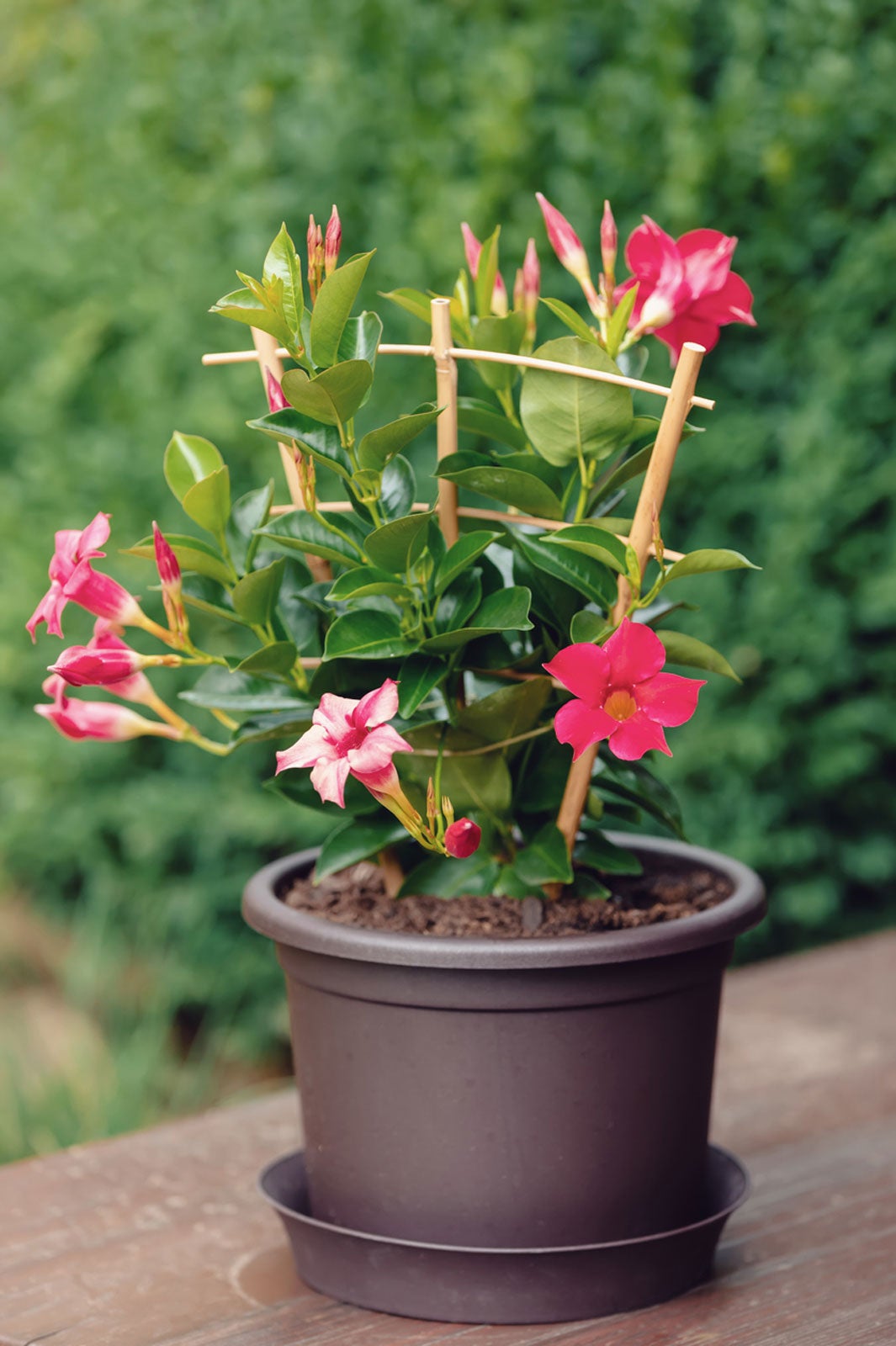 Repotting Mandevilla Plants: Learn How To Repot Mandevilla Flowers
Repotting Mandevilla Plants: Learn How To Repot Mandevilla FlowersMandevilla is a reliable flowering vine with stunning, trumpet-shaped blooms. In cooler climates, it is grown as an indoor plant. Occasional repotting is necessary to keep the plant healthy and repotting mandevilla isn’t difficult. This article will help.
By Mary H. Dyer
-
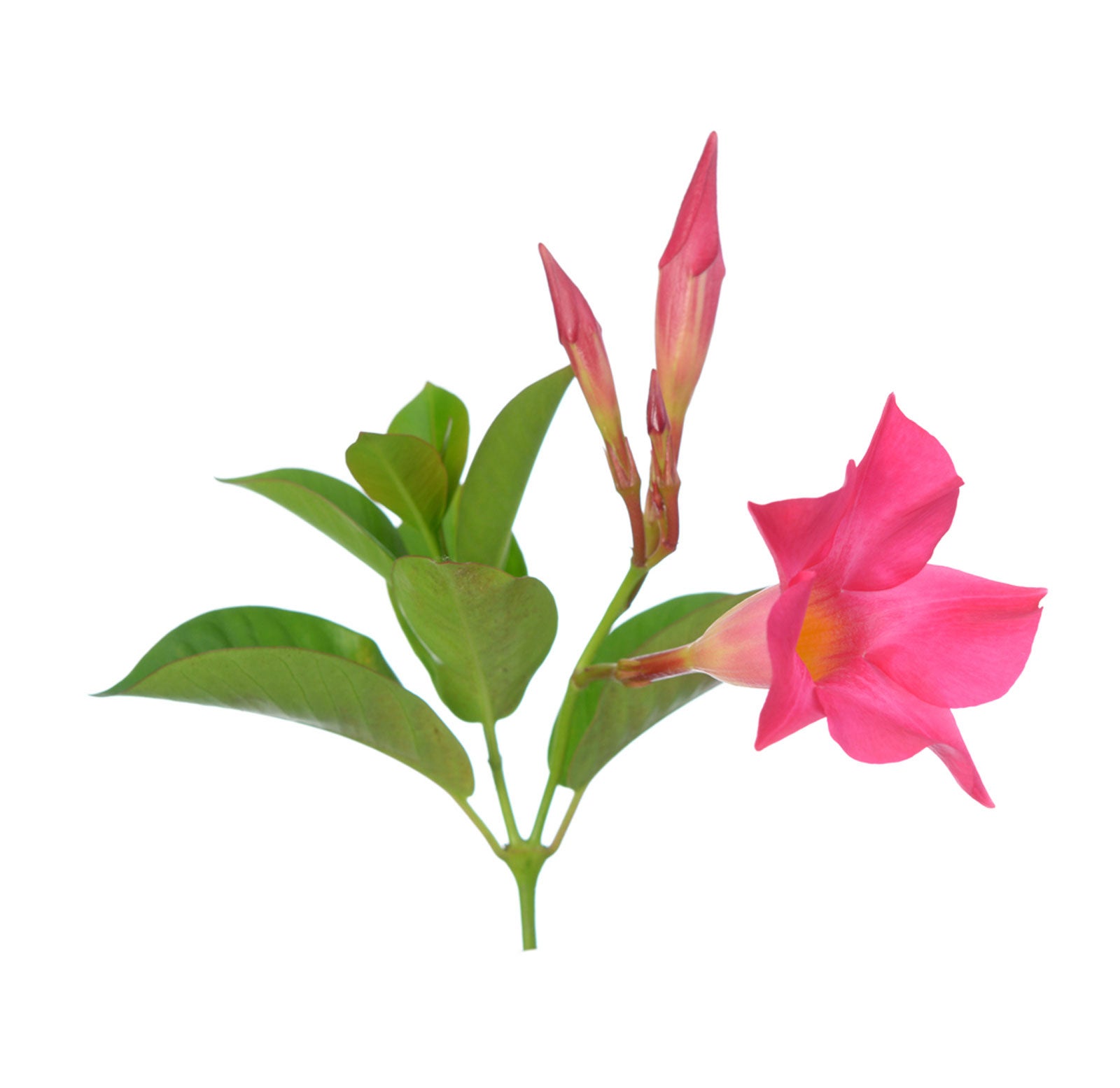 Dipladenia Cutting Propagation – How To Root Dipladenia Cuttings
Dipladenia Cutting Propagation – How To Root Dipladenia CuttingsDipladenia is a tropical vining plant similar to Mandevilla. Many gardeners grow these vines from cuttings to grace a garden bed or patio. Perhaps, you are interested in growing this lovely vine for yourself. For tips on how to root Dipladenia cuttings, click this article.
By Teo Spengler
-
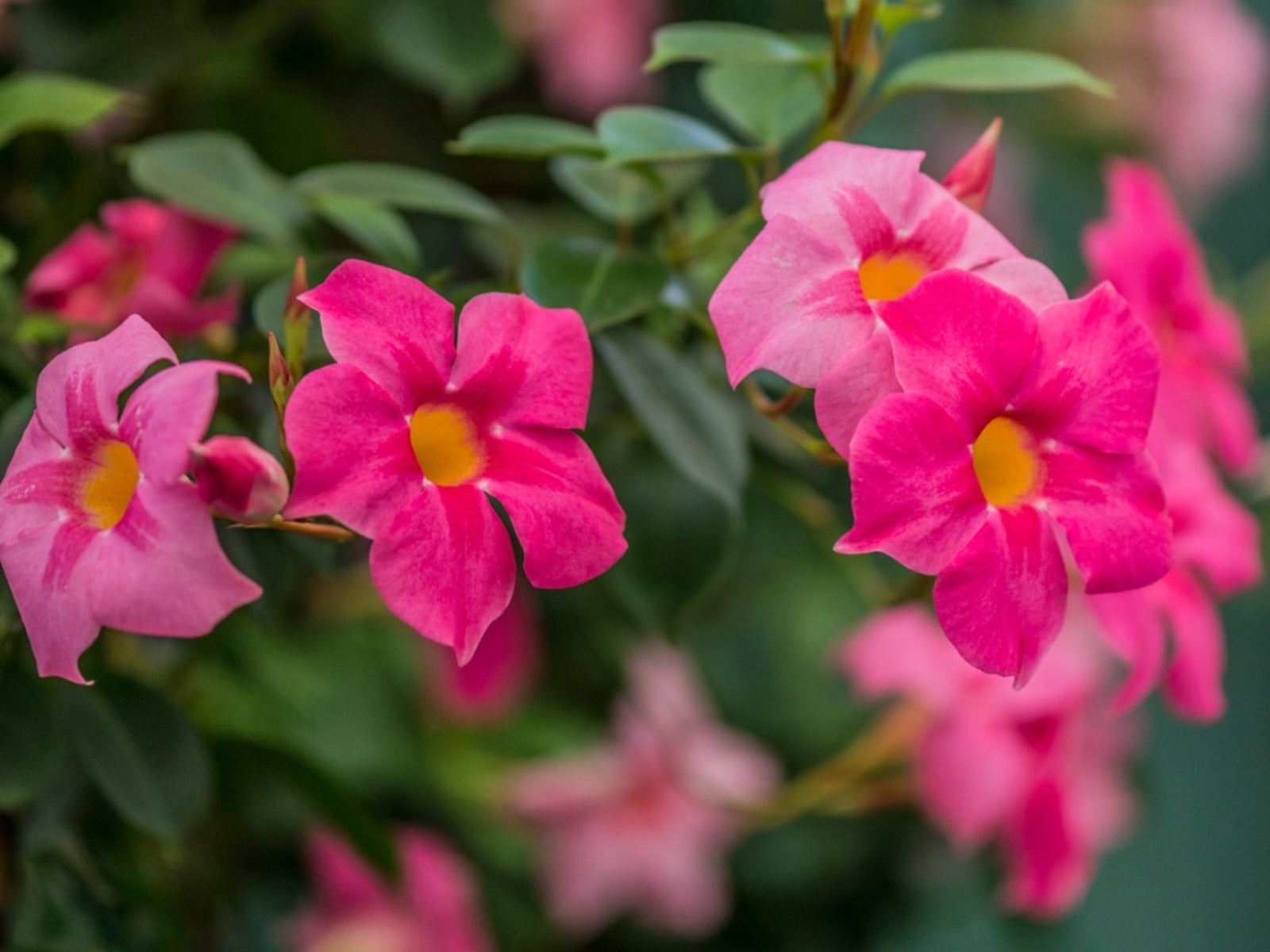 Mandevilla Plant Tubers: Propagating Mandevilla From Tubers
Mandevilla Plant Tubers: Propagating Mandevilla From TubersThere are several easy ways to start a new mandevilla plant, including seeds and softwood cuttings, but propagating mandevilla from tubers probably isn?t a viable method of propagation. Click here to learn more about mandevilla plant tubers.
By Mary H. Dyer
-
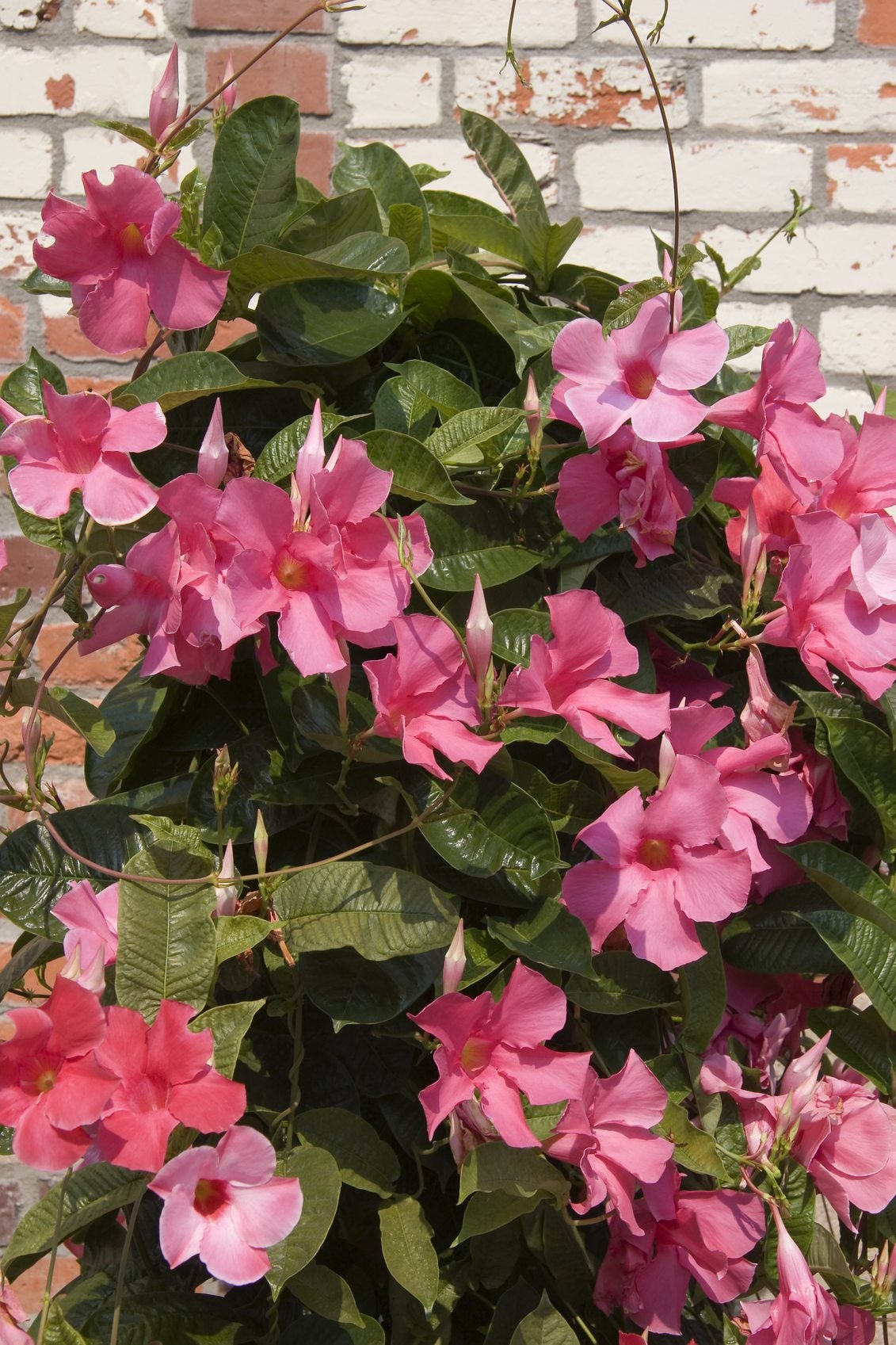 Should I Cut Back Mandevilla – When To Prune Mandevilla Vines
Should I Cut Back Mandevilla – When To Prune Mandevilla VinesIf allowed to grow untended, mandevilla can start to get an unkempt appearance and not flower as much. This is why pruning mandevilla vines at least once per year is recommended. Learn more about how to cut back a mandevilla in this article.
By Liz Baessler
-
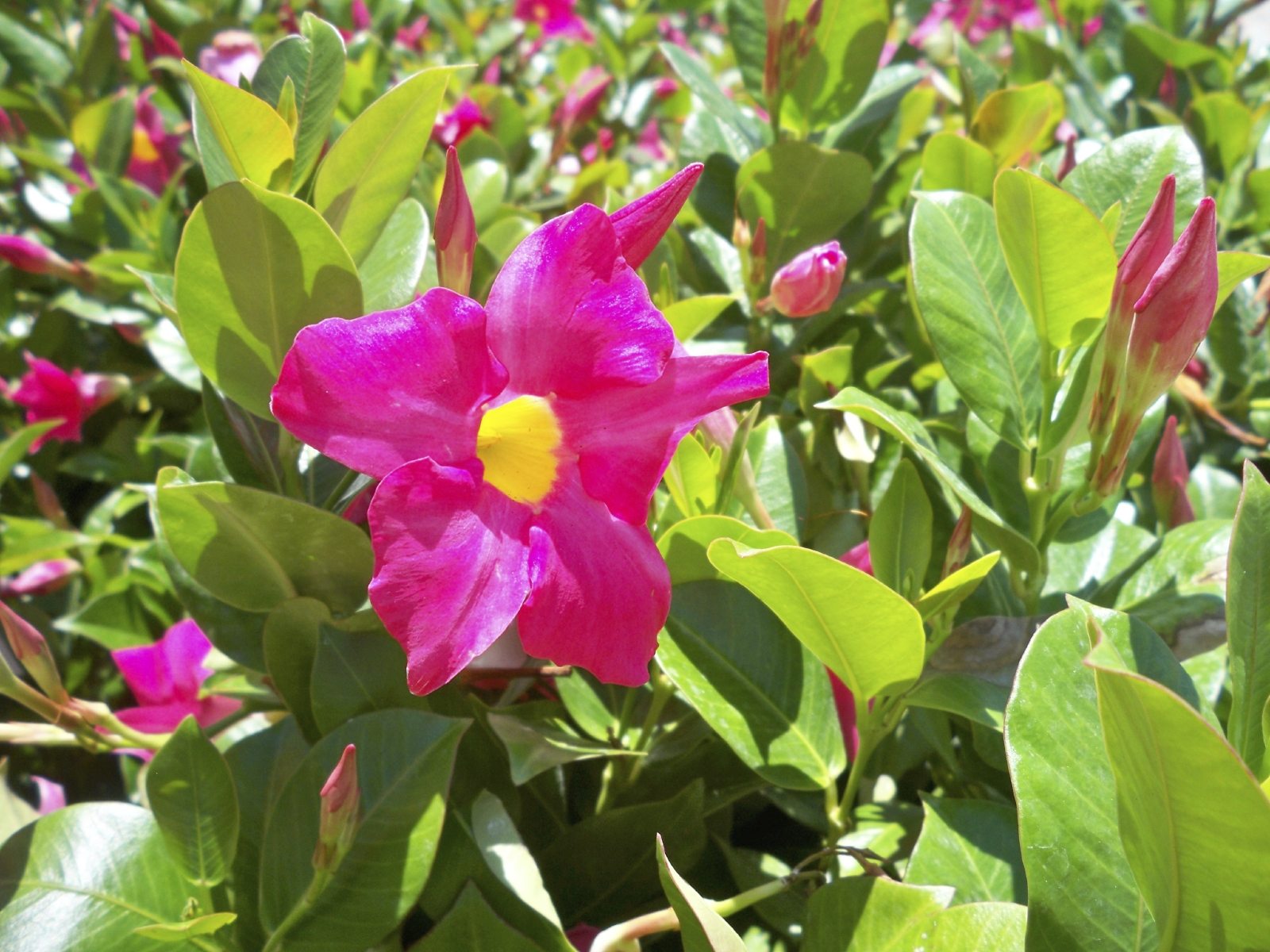 Mandevilla Ground Cover – How To Use Mandevilla Vines For Ground Covers
Mandevilla Ground Cover – How To Use Mandevilla Vines For Ground CoversA mandevilla vine can scramble over a slope as fast as it can climb a trellis, especially in areas where it is difficult to plant grass. Read this article for information about using mandevilla vines for ground covers.
By Teo Spengler
-
 Mandevilla Blooming Season: How Long Do Mandevillas Flower
Mandevilla Blooming Season: How Long Do Mandevillas FlowerWhen does mandevilla vine bloom? How long do mandevillas flower? All good questions, and the answers depend on a number of factors. Read this article for specific information about the mandevilla blooming season. Click here to learn more.
By Mary H. Dyer
-
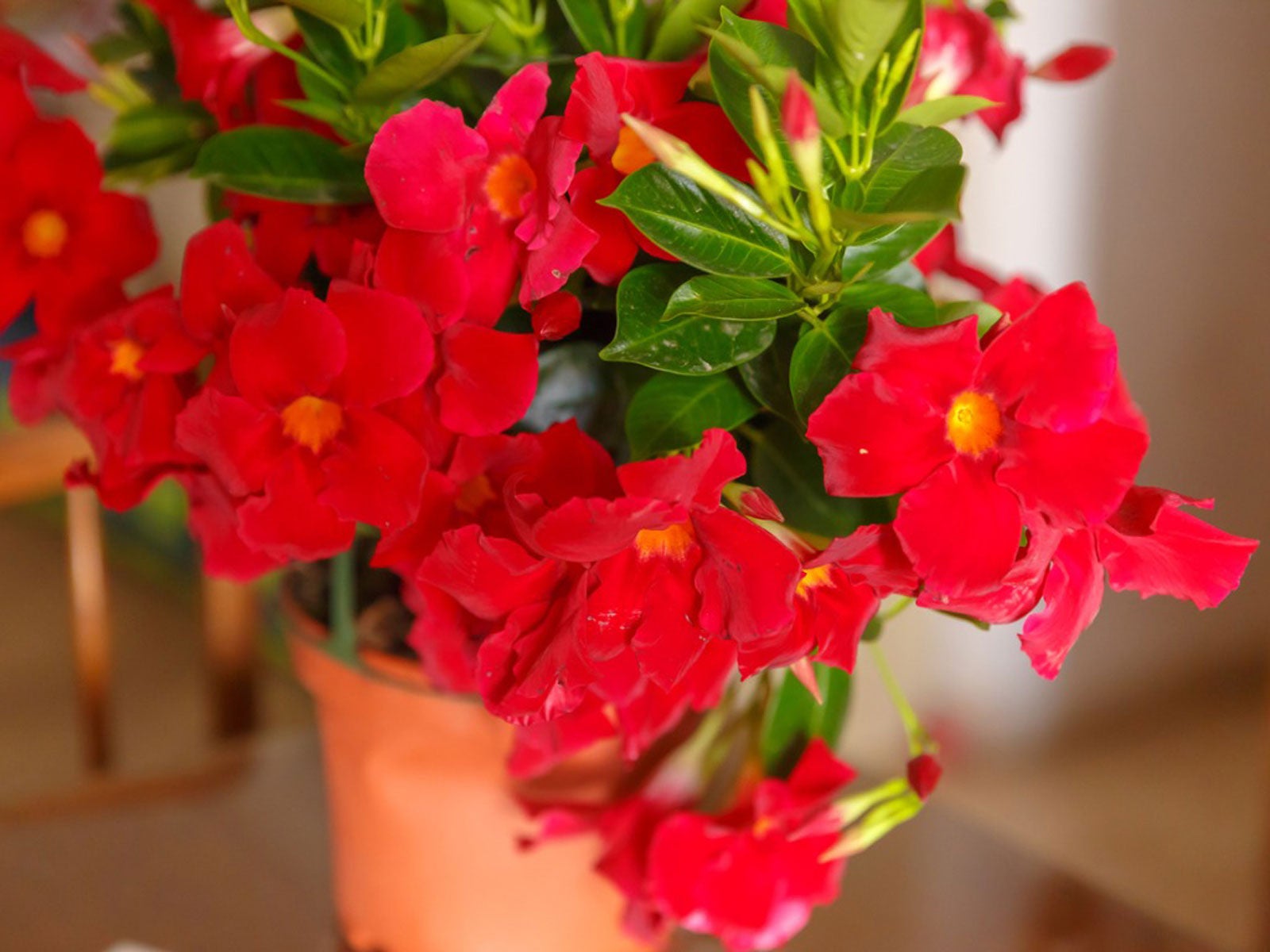 Winterizing Mandevillas: Tips For Overwintering A Mandevilla Vine
Winterizing Mandevillas: Tips For Overwintering A Mandevilla VineIf you live in a more northern climate, planting mandevilla in a container is the best way to go. Click this article for tips on winterizing mandevillas.
By Mary H. Dyer